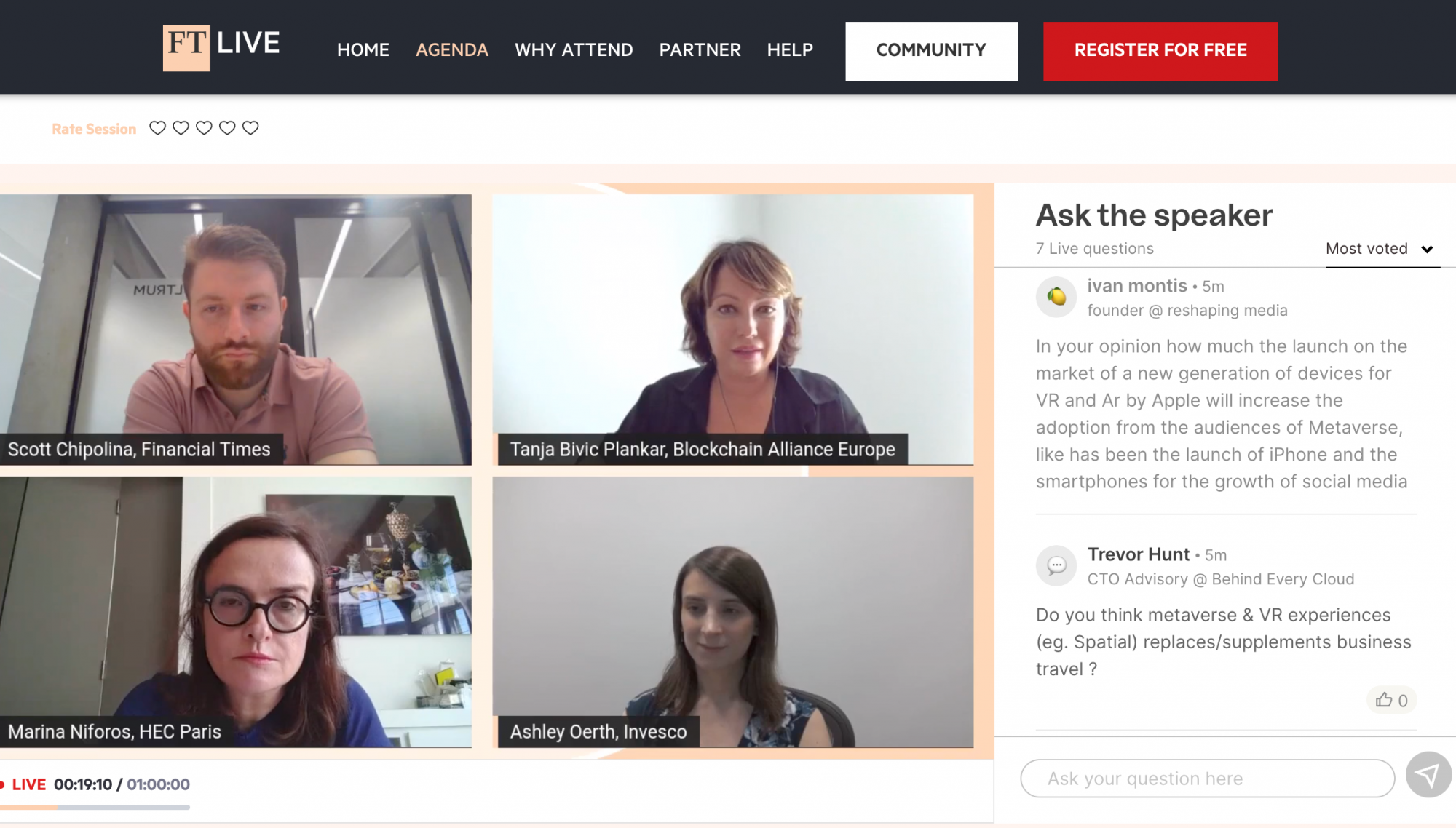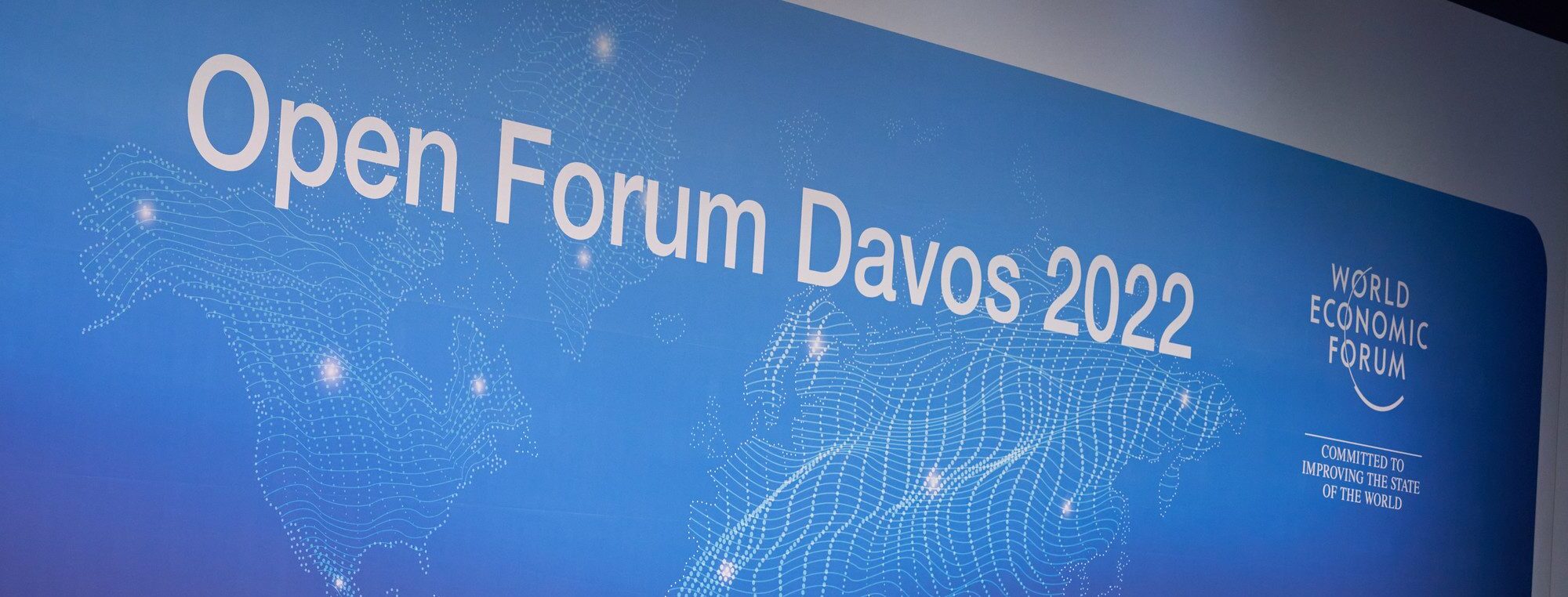Una dei principali problemi associati all’ondata di Ai generative cui stiamo assistendo è il poter distinguere se ciò che stiamo vedendo è falso o meno e come possiamo fidarci di ciò che vediamo. Sfortunatamente, è molto difficile verificarlo e richiede istruzione, rilevamento e attribuzione. Ma alcuni dei più importanti attori di Media e Tecnologia stanno unendo le forze per affrontare almeno l’aspetto dell’attribuzione. Continue reading “Il futuro dei contenuti nonostante l’IA generativa e la disinformazione”
Nessun metaverso per le donne, o no?
In molte discussioni dal vivo o online su Metaverso e Web 3.0 i principali relatori sono sempre uomini. Sembra che le vecchie abitudini non cambino mai e il vecchio paradigma dei nerd che parlano di innovazione e tecnologie sarà la costante anche di questa terza ondata. Ma qualcosa sta cambiando. Continue reading “Nessun metaverso per le donne, o no?”
Davos e il Metaverso: l’asilo sta chiudendo
Sta diventando difficile leggere il programma di qualsiasi fiera o convegno, anche della sagra della lumaca, senza la parola “metaverso” nel titolo di qualche intervento. Fa eccezione il World Economic Forum di Davos, che si è appena concluso: nella lista degli interventi non ci sono le parole metaverso o web3. Ma non se ne sono dimenticati. Anzi tutto il contrario. Continue reading “Davos e il Metaverso: l’asilo sta chiudendo”
The future of newspapers is a trade-off between usefulness and identity
In this short interview that I released during the last Mediastar edition, I briefly explain my view of the future of newspapers
News Sources among Young People.
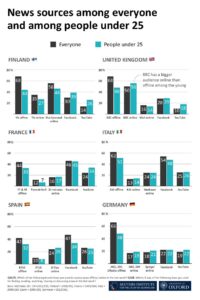 An old refrain in the traditional publishers and newsroom was that deliver digital content was a way to reach young and fresh audiences. Splitting in this way their audiences simply using a different channel: older on the broadcast and press, younger on digital. Nothing more wrong today. Recent research from the Reuters Institute shows how Public Services in Europe like BBC in the UK, or RAI in Italy fall in reaching, thanks to online services, a different audience from their current broadcast audiences. In other words, in my humble opinion, It’s happening in the media environment what already happens in retail where the concept of Omnichannel distribution means more reach the same customer in different contexts than reach a different kind of customers in a different situation. If I’m a Zara customer I will never become a Brooks Brother customer and the other way around. In the same way in media, multiplying channels (press/digital or broadcast/digital) isn’t becoming a way to serve different audiences, but more a way to serve the same audiences in a different context. Here the link to the Reuters Report https://lnkd.in/ecmz5BT
An old refrain in the traditional publishers and newsroom was that deliver digital content was a way to reach young and fresh audiences. Splitting in this way their audiences simply using a different channel: older on the broadcast and press, younger on digital. Nothing more wrong today. Recent research from the Reuters Institute shows how Public Services in Europe like BBC in the UK, or RAI in Italy fall in reaching, thanks to online services, a different audience from their current broadcast audiences. In other words, in my humble opinion, It’s happening in the media environment what already happens in retail where the concept of Omnichannel distribution means more reach the same customer in different contexts than reach a different kind of customers in a different situation. If I’m a Zara customer I will never become a Brooks Brother customer and the other way around. In the same way in media, multiplying channels (press/digital or broadcast/digital) isn’t becoming a way to serve different audiences, but more a way to serve the same audiences in a different context. Here the link to the Reuters Report https://lnkd.in/ecmz5BT
The winner takes it all

It’s a fierce rule of the Internet that polarization of users is much higher than in the physical world. The consequences are that the winners are far bigger than the other competitors. This chart explains very well this concept applied to the US Newspapers. It’s also true that on the Internet things can change very quickly if you are good at execution and have large resources. But to have success you need both. L. A. Times difficulties is a very good example of the fact that limitless resources are not enough to succeed. (Anyway in Italy many publishers would kill to have the same number of digital subscribers of LA Times, but this is another story and another market…)
The NiemanLab Article: “The L.A. Times’ disappointing digital numbers show the game’s not just about drawing in subscribers — it’s about keeping them”
Print media have become a luxury product
Not because of their cost, but because of the time. People don’t have more time to dedicate to them so they decide not to spend more money on it.
Here the report: “The Consumer Trends That Destroyed Media’s Business Model”
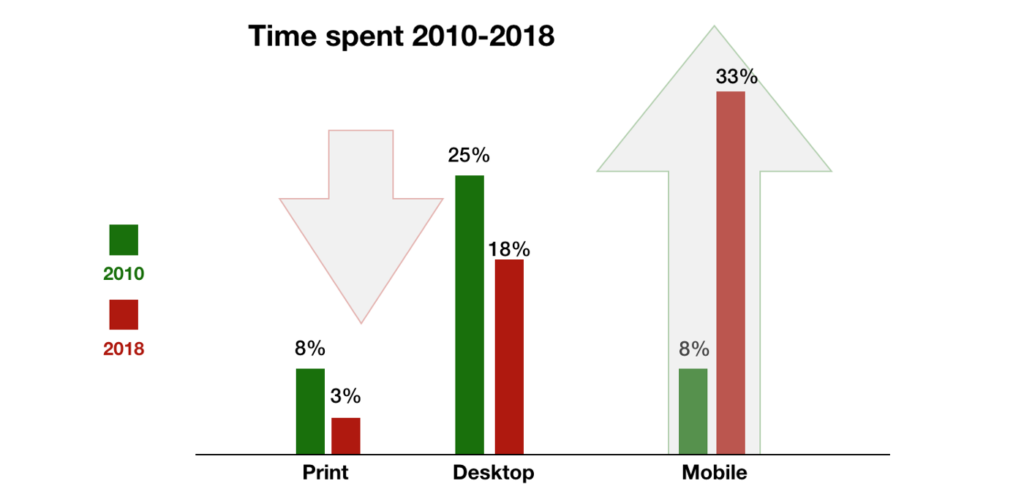
News for Young People isn’t for Everyone.
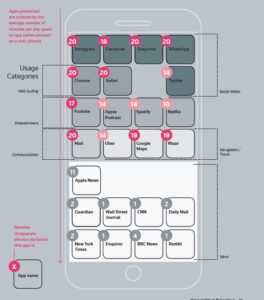
It’s a mantra of every newsroom or publisher that young people don’t buy news and it’s a very tough audience to serve. Actually young people never have bought news, the spending of young generations compared to adult and older people has been always reduced, also for a trivial reason of spending capacity. But nevertheless the interest in what was commonly considered as news was common to previous generations. But today something is changed, Young people are no more interested in what traditional news brands see news as: what you should know. Young audiences see news as: what you should know (to an extent), but also what is useful to know, what is interesting to know, and what is fun to know. A truly interesting report from Reuter Institute “How Young People Consume News” shows very clear this evolution. The distribution of the Apps in a Smartphone itself reveals the approach of new generations towards news. And in this iconic image shows the Apps ordered by the average number of minutes per day spent on the app (when present on a user phone). You can find the full report at this address https://lnkd.in/eN27CYh
Differentiate or Die

The last financial results from The Economist is a gold mine for understanding the recent trends of the media industry and how an indiscuss leader like The Economist is struggling to maintain its business sustainable. Illuminating is the first item of The Economist Group’s guiding principles: “We aim to offer insight, analysis and services that are valued by our customers”. That explains one of the core aspects of The Economist strategy: not multiplying publications, but focus on the needs and nature of your customers. This lead to very simple results: growing of the subscription base thanks to add more value to the digital services and contents related to the subscriptions, less dependency from advertising, growing of research and consulting services. These last seem very interesting for two reasons. First of all, there is continuity among Research business and Content business (with good research you can create great content) Second many of their content customers are also research customer. And from Research, you can develop also Consulting business, which is also growing.
Here the link to the Economist Annual Report: https://lnkd.in/e7tpMDG
Are News the new drugs?
 Use of Artificial Intelligence on news diffusion is changing the way how we keep ourselves informed. The problem is that actuals algorithms are set up to keep us engaged, not informed. And this opens the door to fake news and all the problems connected to them. Do we need a new generation of algorithms with some sort of ethical rules included? Or perhaps it’s time we start to consider technology not only a playground for engineers but also a matter of social health. In the pharma industry before to release a new drug there is a lot of research, and an independent Institute gives the authorization. Is it time to start thinking in this way and, before to release AI algorithms, certify that they don’t harm people and democracy?
Use of Artificial Intelligence on news diffusion is changing the way how we keep ourselves informed. The problem is that actuals algorithms are set up to keep us engaged, not informed. And this opens the door to fake news and all the problems connected to them. Do we need a new generation of algorithms with some sort of ethical rules included? Or perhaps it’s time we start to consider technology not only a playground for engineers but also a matter of social health. In the pharma industry before to release a new drug there is a lot of research, and an independent Institute gives the authorization. Is it time to start thinking in this way and, before to release AI algorithms, certify that they don’t harm people and democracy?
Here the video;
https://www.fastcompany.com/video/ai-is-changing-the-news-we-consumeand-how-we-consume-it/TVzSkvTk?jwsource=cl


